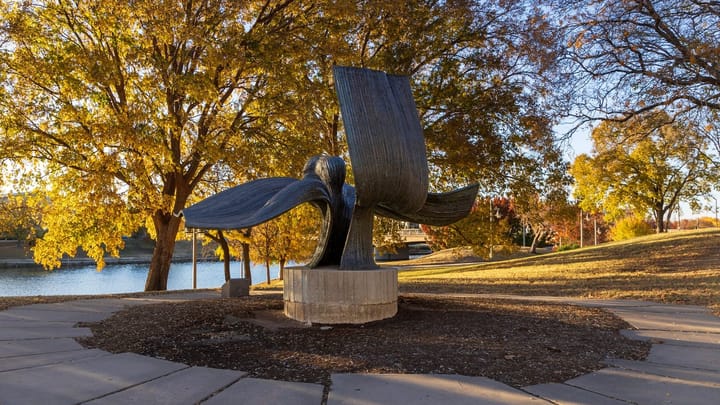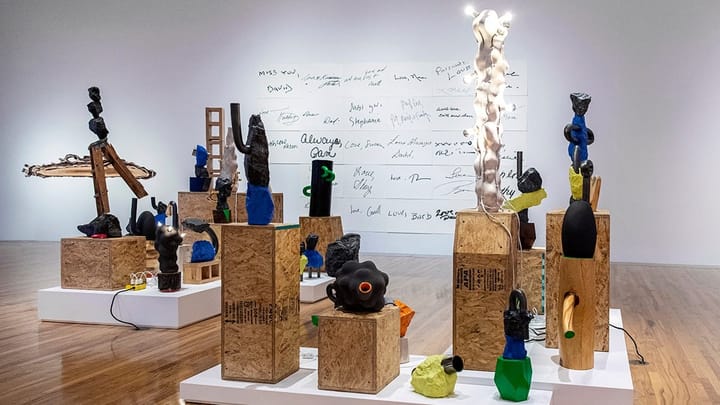Serious games: in 26 bite-sized plays, '[et cetera]: A Theatre Lab' combines silliness with sincerity
With its two-day run last weekend, Experimental Theatre Co. announces itself as a troupe to follow.
![Serious games: in 26 bite-sized plays, '[et cetera]: A Theatre Lab' combines silliness with sincerity](/content/images/size/w1200/2025/09/Grief-Passport-1.png)
A festive entry awaited audience members for the lamentably brief two-day run of Experimental Theatre Co.’s “[et cetera]: A Theatre Lab” at Studio School September 5-6. A fellow bouncing around greeted audience members at the entrance to the gymnasium, cheerfully yelling things like, “Hello! Why are you trying to pass us?” before requesting names and then carefully writing oddities like “Number 1” or “Boof!” onto stick-on name tags.
Once seated, the silliness continued: behind the “stage” — an open space with stacked black boxes — a large screen rendered projections of phrases like “Et Cetera is brought to you by Madi White. She’s not part of this; we’re just big fans” and “Many additional thanks to the pets of ETC,” followed by a long list of names.
One projection hinted at the occasional dose of gravity ahead: a call to action to support the shamefully defunded PBS, with a scannable QR code for sending donations. (The short play “pbs, my beloved” depicted a memorial through a montage of clips from the network’s many kid shows, ending with Mr. Rogers telling the children, “I like you just the way you —” as a man in a suit unplugs the television.)
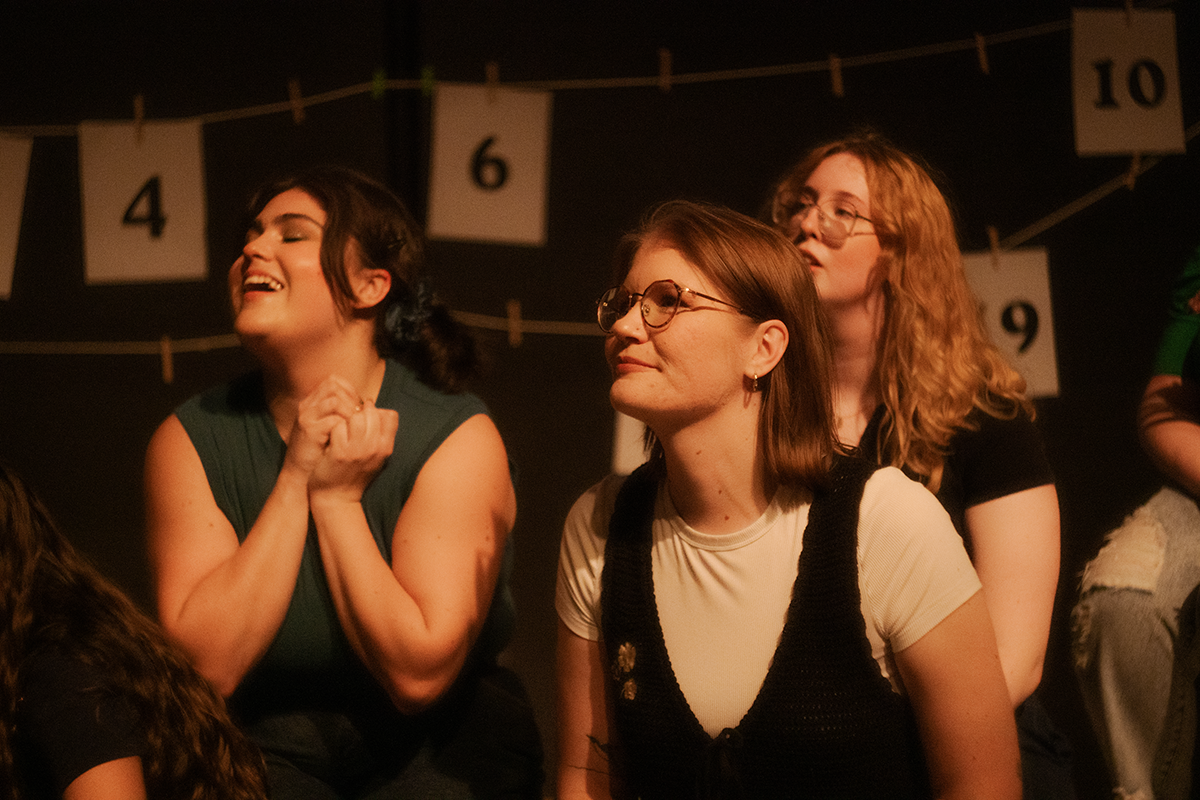
After some on-stage clowning around by the actors — co-producer Kinsey McDaniel, Baylee Braswell, Jill Nicole Herbert, Mia Krebs, Caleb Jamal Manuel, Keysa McMillan, Anna Kate Potter, and Isaac Roads — co-producer Brett McGlothern started the show by explaining the evening’s “rules.” From the “menu,” audience members were to shout out choices from a numbered list of 20 two-minute plays written by the actors, who then would leap into place (and I do mean leap) to perform them. We’ll know the scenes end when somebody shouts “Curtain!” The goal: to present them all within 40 minutes.
The Friday performance got in all but one, and I’m not sure how they could have improved on that number, because the production consisted of actors calling out the scene titles, racing around placing boxes in various configurations, adding the (very occasional) prop or set piece, yelling the mantra “Crew ready? Cast ready? Go!” and then performing scenes in purely conventional ways — which is to say theatrically, and well.
Our free email newsletter is like having a friend who always knows what's happening
Get the scoop on Wichita’s arts & culture scene: events, news, artist opportunities, and more. Free, weekly & worth your while.
No spam. Unsubscribe anytime.
The ensemble is extremely tight, and although a pattern emerges throughout the evening regarding each of the eight actors’ performing styles, rhythms, and preferred modes, each is flexible, transforming into whatever the play needs. With few exceptions, the troupe struck and reassembled so quickly and frenetically that this comprised part of the entertainment. It was in strong contrast to that flat, potentially disassembling stretch of dark that can occur between scenes in traditional plays. (A rare exception was the need to roll out a piano for a duet — its hand-calligraphied sign “Ye Olde Piano” helped, but couldn’t quite fill the drawn-out dead space.)
Among the scenes were a couple of songs, including the lovely solo “Wolf in dog’s clothing” and the performance mentioned above; a handful of somber pieces (probably among my favorites because of my own proclivities); and, mostly, comedy pieces that, mostly, gave what they promised: very funny stuff.

“HOT SINGLE IN YOUR AREA!” takes a woman and a volunteer from the audience through a sequence of key life events: from their “date” (in which the actor performs the lines and action as the volunteer stands doing nothing, adding to the hilarity) comes marriage and then — with a turn upstage and the quick, magical placement of a balloon under a shirt — pregnancy; she’s on her back an instant later giving birth, and then the newborn balloon becomes a decoration for their child’s birthday party. Screaming ensues (the volunteer still standing in place like a prop), and mom shouts “I want a divorce!” as she pops the balloon and calls “Curtain!”
On the theme of divorce, but blended with comedy and acute pain, was “It’s 2008 and Your Parents are Getting a Divorce,” in which a young man listens to music through earphones as his parents scream at each other offstage. As the battle heats up, so does the music, eventually drawing him into a clumsy but endearing faux-rocker dance. He’s in his head, where he’s a star and his home life is nowhere to be heard.
“Wear a Hamlet for Safety” throws the first few scenes of Shakespeare’s classic play into a blender, ground up by skate boarders (wearing helmets) tossing jibes and accusations of adultery and murder in street slang. “This Must Be What It Feels Like To Chew Five Gum” sweetly depicts two women in a movie theater working up the nerve to touch fingers, then hold hands. The auditory ending is perfect.
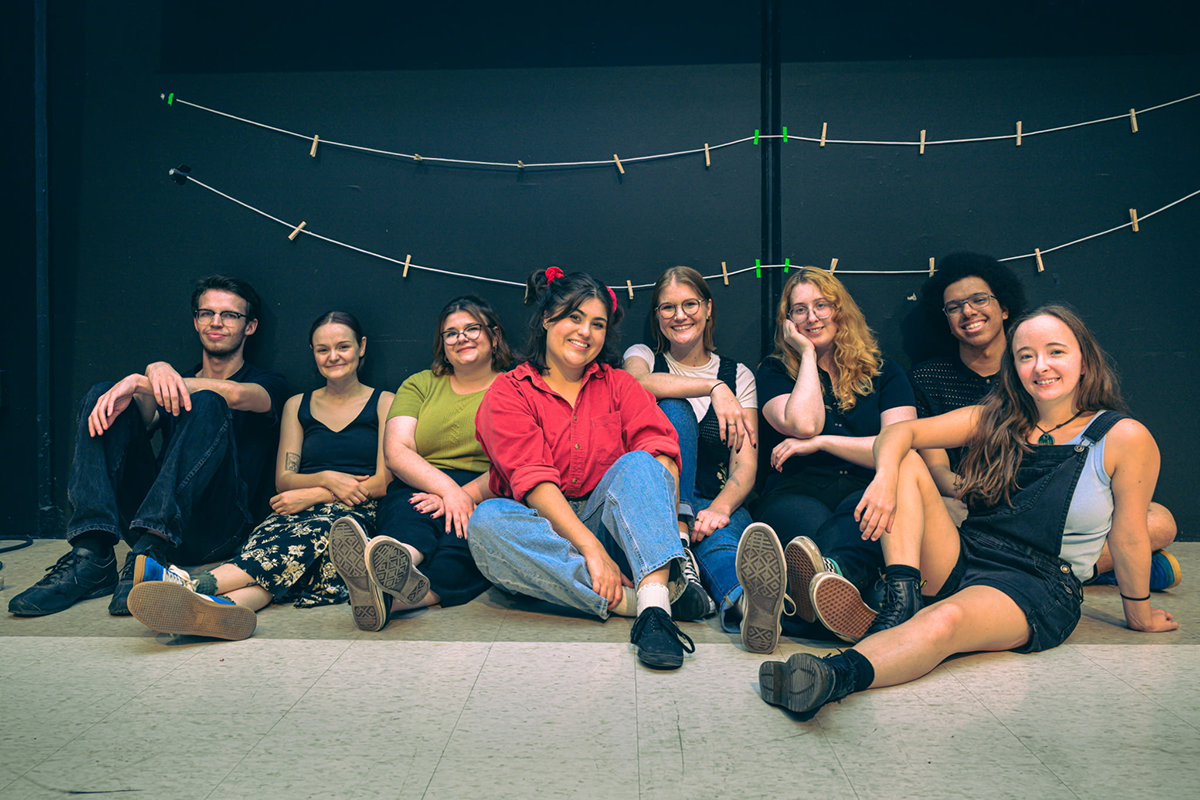
“Secret Life of the Chameleon” is exquisite in its minimalism and impact. All movement, no words. The protagonist wears a belt holding different-colored masks. She mirror-dances with others, each wearing a mask. If the color of the mask she chooses doesn’t match her partner’s, she can’t find the rhythm; her arms flounder, she is visibly uncomfortable. Then she learns to match her mask color with that of each new dancer, and they flow together, arms and bodies in sync. She adds mask upon mask and the dance turns ugly until she collapses in tears, when a maskless friend approaches and gently removes each disguise until the dancer’s face, too, is naked. At last, she is at ease. The simple, elegant masks are among the pragmatic but aesthetically pleasing props, lighting, sound design, and set pieces provided by crew members Bellaly Escalante, Arthur Reese, and Brett McGlothern.
The second act features six slightly longer plays lasting about five minutes. These are of less consistent quality, but the comedic “The Alma Mater,” a sendup of high-school tropes, and the semi-comedic “Grief Passport,” in which a woman must receive stamps at each of the stages of grief before being allowed to “accept” her grief, were among the more effective.
The visually and thematically lovely “Three Sheets to the Wind,” is performed to “The Dying Swan” from Tchaikovsky's “Swan Lake.” This was, like “Chameleon,” wordless and powerful; its title adds to its aching depiction of love and loss. A bed, depicted by a sheet and two pillows held up from behind, holds two women so happy they dance in a waltz together in their dreams. The bed morphs into a hospital bed, which morphs into a casket. The play ends with a beautiful visual motif. It’s a stunner, and in Friday’s production, it brought the show to a lovely close.
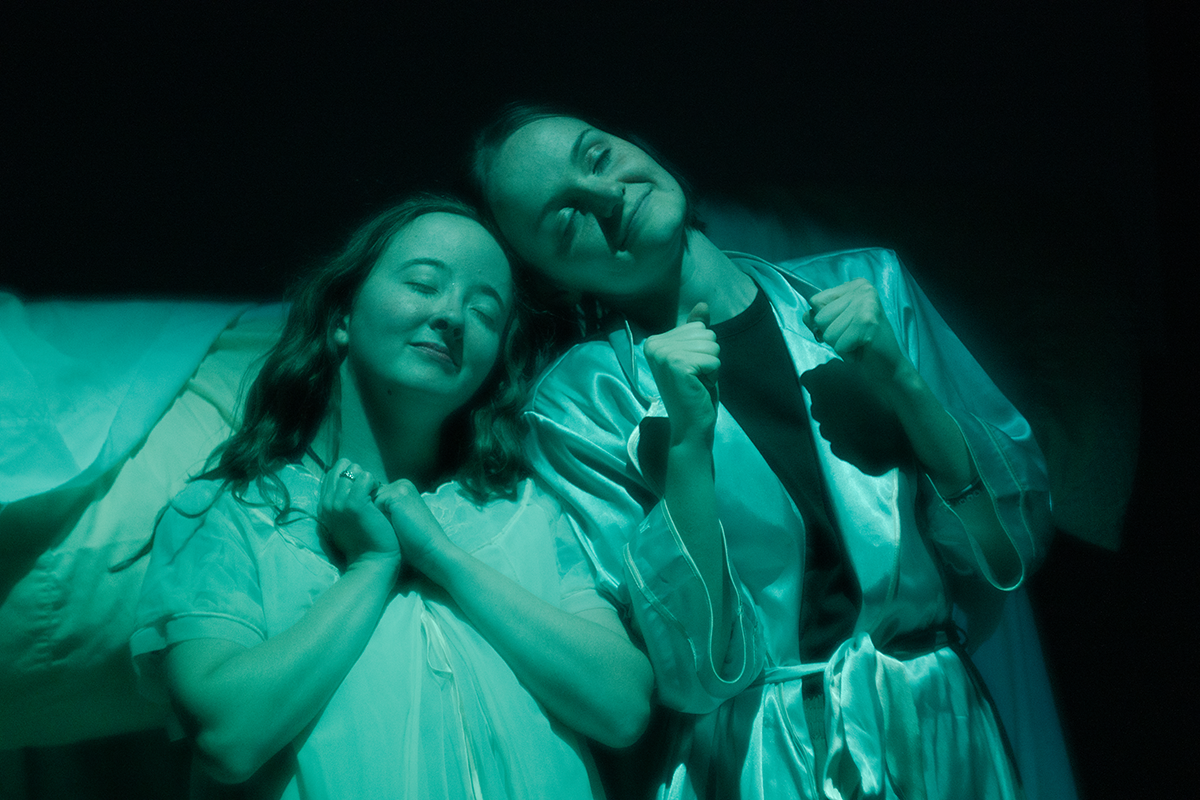
“The Theatre” is always, famously, on its death knells, and then something always comes along to revive it. Experimental Theatre Co. is working along those lines, combining a welcoming, relaxed audience experience (no stuffy, hushed, upper-class “culture” here) with fresh but classically trained theater chops into a stew that might help keep stages alive for a bit longer.
Anne Welsbacher writes plays, fiction and nonfiction, and book and theater reviews. She can be found on Substack and Bluesky. She is the Performing Arts Editor for this publication. awelsbacher.com
❋ Derby man has the kind of voice that turns heads — and chairs
❋ Socializing while sober: how some Wichitans are cultivating alcohol-free communities
❋ As a small creative business closes, the owner mourns
❋ Painting through it: Autumn Noire on 20 years of making art
❋ How a guy from Wichita resurrected 'Dawn of the Dead'
❋ Bygone Friends University museum housed curious collections
Support Kansas arts writing
The SHOUT is a Wichita-based independent newsroom focused on artists living and working in Kansas. We're partly supported by the generosity of our readers, and every dollar we receive goes directly into the pocket of a contributing writer, editor, or photographer. Click here to support our work with a tax-deductible donation.

